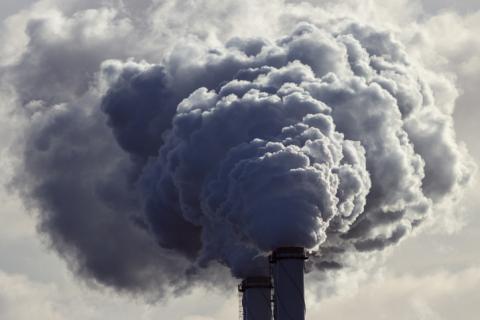
Dr Cláudia Custódio discusses how rising temperatures affect business performance, and why it’s vital that we understand the macroeconomic impact of climate change
Do we fully understand the economic impact of climate change? We suspect businesses will be hurt by a hotter planet, but with global rises in temperature of up to two degrees Celsius on the horizon, we need to know who will suffer and by how much. If we know in advance which countries and which parts of the economy will be harder hit, policymakers can act to mitigate the damage. As received wisdom says – what gets measured gets managed.
In our research, we’ve taken an in-depth look at the impact of rises in temperatures on firms to measure how they perform, and to understand which businesses will adapt and cope better than others.
The impact on business
We know already that vulnerable sectors such as agriculture will take a hit from climate change. We also know that severe weather – flooding, storms, heatwaves, and fires – damages supply chains and disrupts business. There’s also evidence that some retailers benefit from climate change as demand rises for the likes of air conditioning or bottled water or electricity.
But beyond these obvious impacts, is there a direct effect of global warming itself on business performance? And can we separate demand-driven effects from supply-side effects?
We’ve managed to tie down the results by looking at sales by firms across the US and how they fare when temperatures rise. Specifically, we compare how suppliers of the same client fare when temperatures rise for some but not all of them. This way we’re able to take into account fluctuations in consumer demand for a finished good or product – if appetite for ice cream increases but demand for chocolate declines as temperatures rise.
As we suspected, a local rise in temperature leads to a drop in suppliers’ sales. Specifically, a local temperature rise of one degree Celsius leads to a two per cent fall in sales to a client over the course of a year. And the data show that suppliers of the same client from regions less affected by warmer climes don’t experience the same drop. So what’s going on?
Rising temperatures and falling sales
There are three main factors that can have a negative impact upon business. If it’s too hot, then staff productivity declines – employees are absent or higher temperatures make working conditions more difficult – particularly within the heat sensitive industries we focused on, such as manufacturing. We also suspected that a company’s finances play a part – deep coffers might allow larger companies to relocate or divert resources to different branches, whereas cash-strapped businesses don’t have the wiggle room to adapt.
And then there is the ease with which a client could simply buy the same thing elsewhere. The more standardised the product, the easier it is to switch supplier. Clients do this if production is affected, or even if they just suspect it will be – it’s a safer bet to go with a supplier in Colorado if temperatures are on the rise in Arizona, for instance. Geography also plays a part here – the more distant a supplier, the more transactional the supplier-client relationship, and the more easily the client finds a substitute than if there’s a personal or local connection.
A local temperature rise of one degree Celsius leads to a two per cent fall in sales over the course of a year. And suppliers of the same client from regions less affected by warmer climes don’t experience the same drop.
And so we’ve found that manufacturers – suppliers in particular – are vulnerable to rising temperatures. And if they’re cash strapped, as many are since the pandemic, they are particularly at risk, because they have no funds to help them adapt, shift premises or change operations, whereas more leveraged companies can better weather the storm.
One might deduce that falls in sales will follow in proportion with rising temperatures – a two degrees Celsius rise in temperatures leads to a four per cent fall in sales and so on. But we know that as temperatures rise, the meteorological effects can be more severe and unpredictable, with greater ensuing disruption. We’ve also seen that bouts of extreme weather can lead to even steeper declines in sales.
Extending our understanding
It’s vital that we understand the impact of the inevitable rise in temperatures. Our research focused on the US but would apply to an extent anywhere in the world, particularly the countries which are more exposed to climate change.
Policymakers need to know what climate change causes at a macroeconomic level – specifically how the revenues of firms will be affected. At a company level, wages might be affected and some companies in highly competitive sectors may even go under because of hotter climes. But if policymakers understand how and when to intervene – when to extend finance or to help improve working conditions – we’ll be better prepared to deal with the fallout.
This article draws on findings from "Economic Impact of Climate Change" by Cláudia Custódio (Imperial London; Centre for Economic Policy Research; European Corporate Governance Institute), Miguel A. Ferreira (Nova School of Business & Economics), Emilia Garcia-Appendini (University of Zurich) and Adrian Lam (Imperial London).



